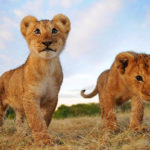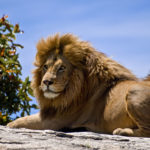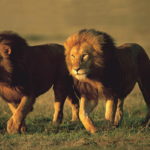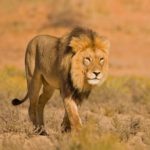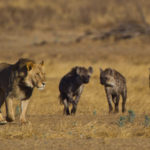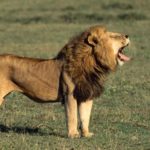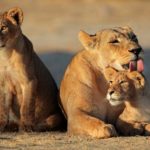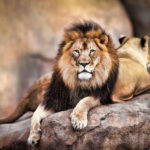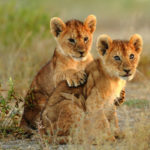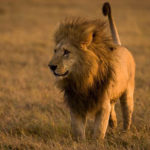Group of lions
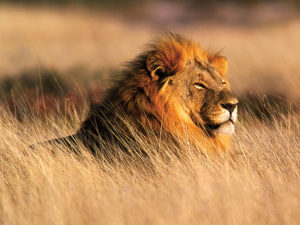 Lions are the only feline, forming social groups, prides. The basis of the pride is 2-18 lionesses, as a rule, they are close relatives having their own territory (the lioness always inherits the territory of the mother). Lioness Pride does not establish a hierarchical relationship among themselves.
Lions are the only feline, forming social groups, prides. The basis of the pride is 2-18 lionesses, as a rule, they are close relatives having their own territory (the lioness always inherits the territory of the mother). Lioness Pride does not establish a hierarchical relationship among themselves.
Along with them there live several lions, among which one is a dominant, it is not always the strongest, but other lions recognize and do not dispute its primacy. He first eats after a successful hunt, first mates with females during estrus, first attacks the enemy – the lion – who invaded the pride territory. In total Pride can have up to 40 animals, but on average about 13.
Young lions, growing up, begins to qualify for the championship and at the age of 2.5 years are expelled from the pride. Subsequently, they either create their own pride, or live 2-3 years in solitary or small groups (up to seven lions, as a rule, these are brothers) without females. It’s easier for such a group to capture a pride than for a lone lion, and it’s easier to defend its pride afterwards: if a pair of males usually hold pride within 2.5 years, then a coalition of 3-4 males – more than three years.
Young lions alone are not burdened by feeding young and caring for the territory, so they eat better and sooner or later they win territory for themselves, which hosts one or even several priests of lionesses. The first thing that a male does when he captures the pride is killing all the lions.
Lionesses, as a rule, are not in a position to prevent them, and chances of salvation are only among lions over the year. In the lioness who lost the lion, in 2-3 weeks begins estrus (estrus) and she will soon give birth to a new leader. Such infanticide (killing of cubs) is a must, as otherwise the new leader would have to wait for at least two years to wait for his own offspring, and despite the fact that the leader, as a rule, changes every 2-4 years, he would not have had time to grow his own cubs .



